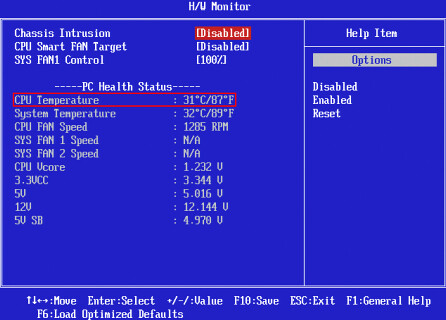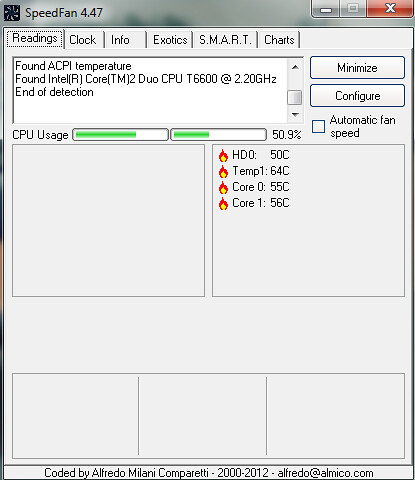This is a guest post! If you want to write for us, check out the Guest Post section.
These essential tips to monitor your CPU temperature can prolong the life of your computer. Your system generates heat whenever it is running. If the components get too hot, the system might freeze and the components’ life span shortened. The worst case scenario is the CPU will burn. The ideal temperature for most CPUs is around 40C or lower. Check your manual for more info.
Three Ways to Check CPU Heat
The first is through the BIOS, the second with your motherboard software and the third via third party programs. If you are going to go with the software method, make sure that it is for the operating system you are using.
1. CPU Temperature Monitoring via BIOS

To do this, go to the BIOS of your computer. Sometimes the BIOS is called “setup” or “system”. Turn on your computer and hit the F2 or Del key (in some older systems you have to hit the F5 or F8 key). If you don’t know, just hit the Pause key. Go into the BIOS. You will see several options; go to the Sensor, System Health, Health Status or something similar. The CPU temperature will be there along with other details.
2. Motherboard Software
You can also check the temperature via your motherboard’s software. All motherboards sold have a CD / DVD containing a CPU temperature checker. Apart from the temperature, the program will also check the fan speed and other settings.
If this wasn’t installed, just put the disc in the drive and install it. Some of these programs can also be downloaded from the manufacturer’s website. Read the software help file for more detailed information.
Warning: most of these programs are custom made; they only work for that particular motherboard and cannot be used on other systems.
3. Third Party Software

No tips to monitor your CPU temperature are complete without mentioning this option. There are a lot of programs that assess CPU heat, speed, voltage and others. Some of these programs are even free. Among the most popular are SpeedFan, Everest and CoreTemp.
Monitor Temperature in Linux Systems
Two of the best CPU heat checkers for Linux are GKrellM and lm-sensors. Both are easy to use and have many features.
Effects of High Temperature
CPUs are built to withstand only a certain amount of heat, usually 100 C, but you mustn’t let them get anywhere near that. If the CPU overheats, your computer might restart randomly. As already stated, there will also be a lot of freezing and system crashes.
Symptoms and Signs
One common symptom is the “blue screen of death” appears when you load it up. The computer will run fine for a while but will suddenly stop working.
Remedies
You can use a thermal casing designed for your CPU. You can also replace the built-in fan with something more powerful; they are available in computer stores. Minimizing the room temperature will also help. Install an electric fan near the computer or an air-conditioning unit. Or you can just move the computer to a cooler environment.
The most serious symptom of an overheating CPU is when you can actually smell or sense the heat. In this case turn the unit off immediately. It’s a good idea to send it to a repair shop. Check if there are any components damaged. Once your computer is restored, install a thermal casing and fan.
As you follow these tips to monitor your CPU temperature, remember that prevention is always better. Install a CPU heat monitor now. Don’t wait for the symptoms to emerge.
Author Bio
Charlie is a free lancer writer and content builder of many technology sites and he is sharing his experience regarding CPU Temperature.
Warning: count(): Parameter must be an array or an object that implements Countable in /home/u265766359/domains/maheshkukreja.com/public_html/wp-content/themes/thesis_189/lib/classes/comments.php on line 43
{ 0 comments… add one now }